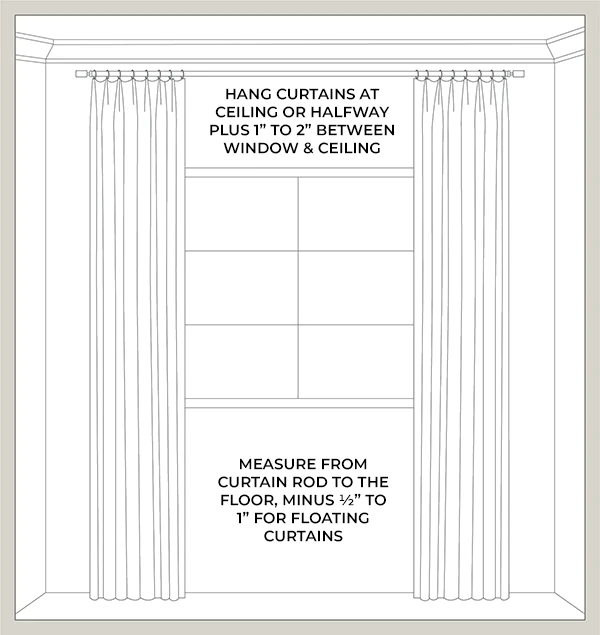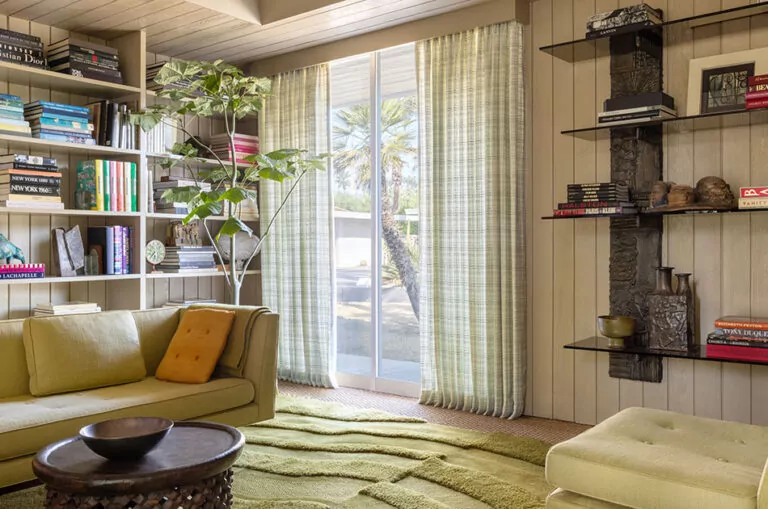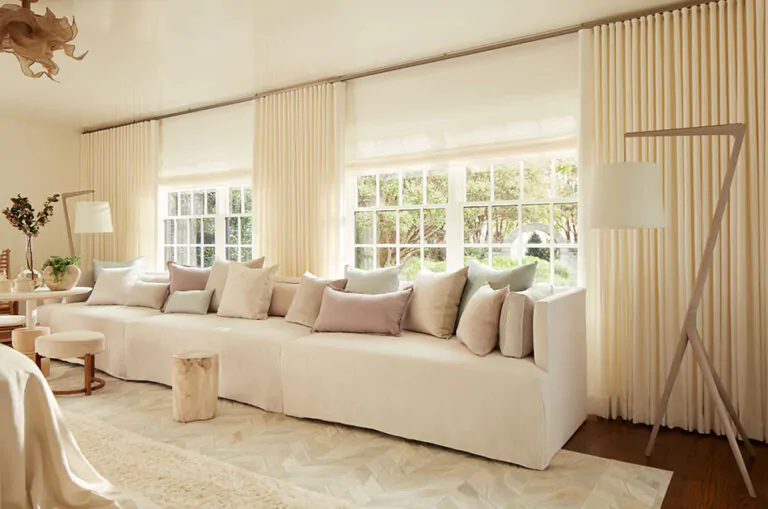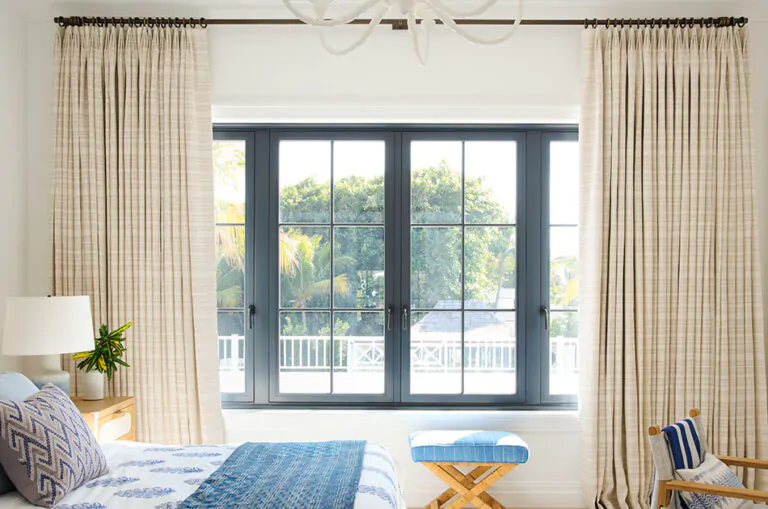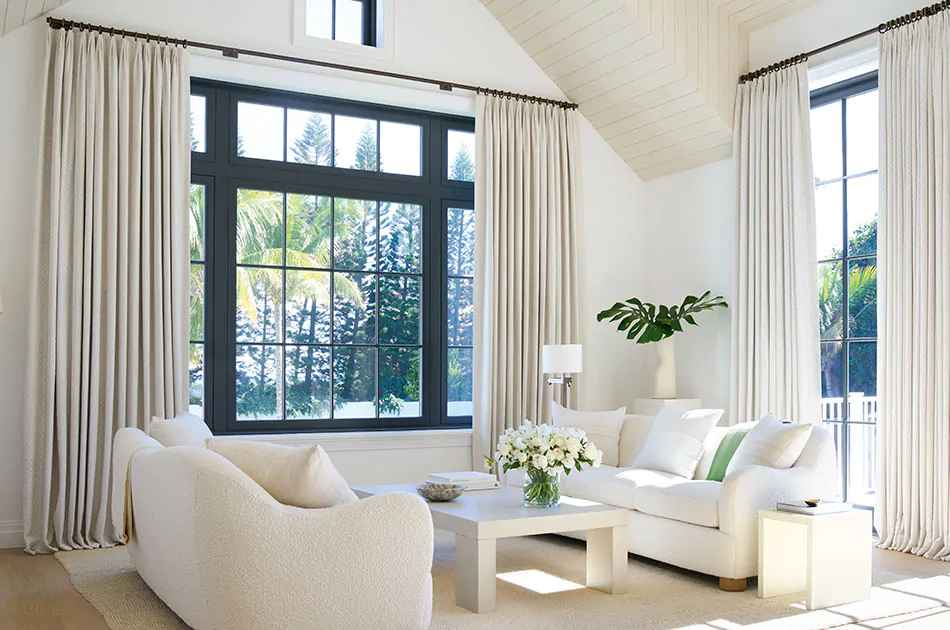
Should Curtains Touch the Floor? Get Expert Tips
Wondering should curtains touch the floor? In general, yes, it’s best for curtains to touch the floor, either by kissing the floor or floating just above it. The effect of long, floor-length curtains is a luxurious look that accentuates the height of your window and ceiling. Plus, it makes the drapery look tailored and curated specifically for your space.
However, when it comes to how exactly your curtains touch the floor, there are a few different options. Finding the right length for your space can be transformative for the room’s overall aesthetic while giving you the functionality you need.
Main Lengths for Drapery
When deciding how should curtains touch the floor, there are three main lengths for drapery that you can choose from:
Float Length
The drapery hovers above the floor.
Break Length
The drapery kisses the floor.
Puddle Length
The drapery puddles on the floor.
Choosing the right one for your space will depend on your:
- Aesthetic preferences – Length can give you different aesthetics, from a clean modern look with float-length drapery or a luxurious, opulent look with puddle drapery.
- Functionality – If you plan to regularly open and close your drape panels, float or break length is best, as the drapery will either hover or just graze the floor.
- Fabric – Certain fabrics can stretch or shrink over time so, it’s best to choose a length that’s mindful of your fabric’s behavior.
See examples and learn more about each length, including how to choose the right one for your space.
Float Length
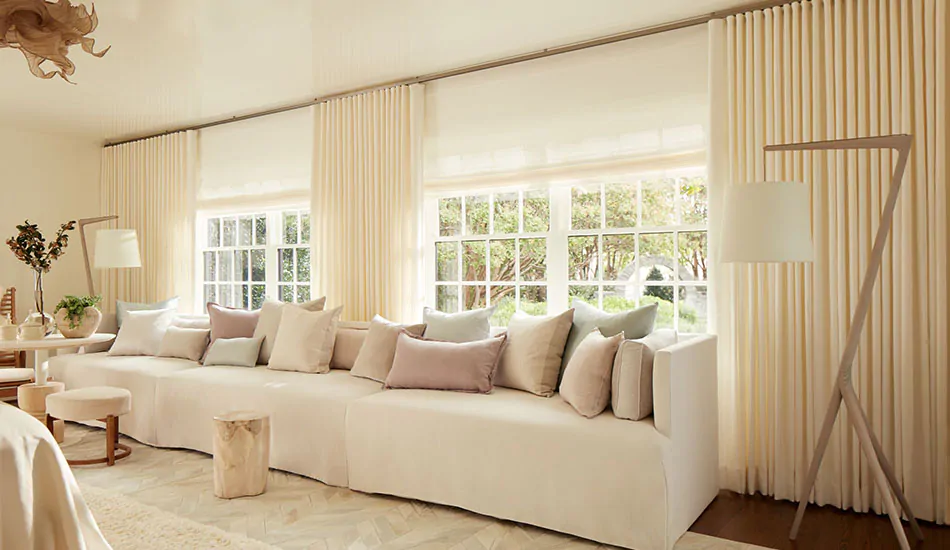
Float length means your curtains hang just above the floor, for a simple, tailored look. Float-length drapery should be no more than 1- or ½-inch off the floor because any higher than that and your curtains may look like they were ordered too short.
How to Measure for Float-Length Drapery: Measure from the curtain rod down the floor and subtract ½ or ¼ of an inch.
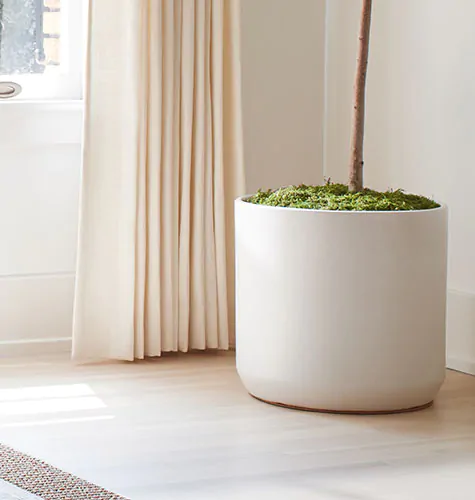
When to Choose Float-Length Drapery
Floating drapery is ideal for:
- A crisp, clean, modern look.
- Newer homes with relatively level floors as the clean line of drapery will accentuate the level floor.
- Easy functionality as the panels won’t graze the floor.
- Casual and formal rooms including bedrooms, kitchens, dining and living rooms.
- Nurseries and kids’ rooms so there’s no excess fabric that can be played with or sat upon.
- Pristine fabrics that are unlikely to stretch or shrink, like Sunbrella fabrics.
When Not to Choose Float-Length Drapery
A float length isn’t always ideal, and the following situations will warrant a longer length:
- Older homes with uneven floors, as the clean line of the drapery will accentuate the unevenness of your floors.
- If you’ve chosen natural fabrics that are prone to shrinking or stretching like silk, linen and wool. If the fabric shrinks, the drapes could soon look too short and unsophisticated. If the fabric stretches, it may not stretch at the same rate across the bottom, making the drapes look ill-tailored.
Break Length
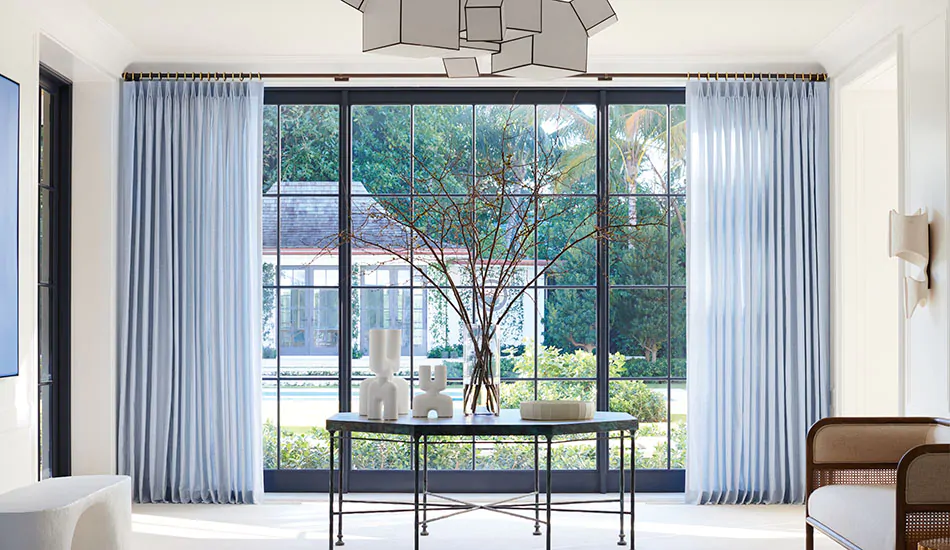
Break length refers to drapery that “kiss” the floor, or gently trail along the floor. This type of drapery should only have about 1 to two inches of excess fabric for an intentional elongated look for your drapery.
How to Measure for Break-Length Drapery: Measure from the curtain rod down the floor and add 1 to 2 inches.
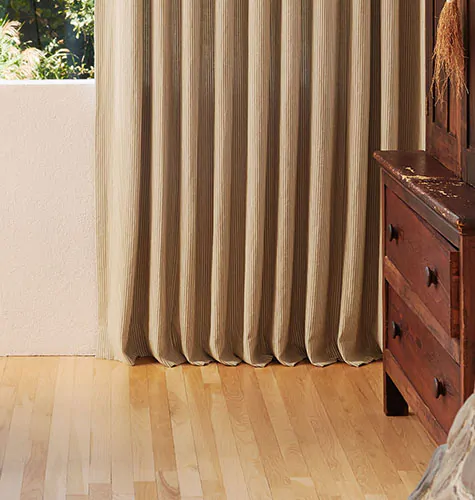
When to Choose Break-Length Drapery
Break-length drapery is ideal for:
- An elegant, elongated look with a touch of luxury.
- Homes with uneven floors as the longer length helps to disguise the unevenness.
- Easy functionality, as long as you don’t mind the fabric grazing the floor.
- Casual and formal rooms like bedrooms, kitchens, dining and living rooms.
- Natural fabrics, like silk, linen and wool and cotton, that are prone to stretching or shrinking in different conditions.
When Not to Choose Break-Length Drapery
Break length is the most versatile length, but there are a few situations that aren’t ideal for this style:
- Along any older floor or baseboard with splinters or protruding nails that the drapery might catch and snag on.
- Drapery that sits behind furniture as the attractive break won’t be visible and might cause the fabric to more likely to catch on the legs.
Puddle Length
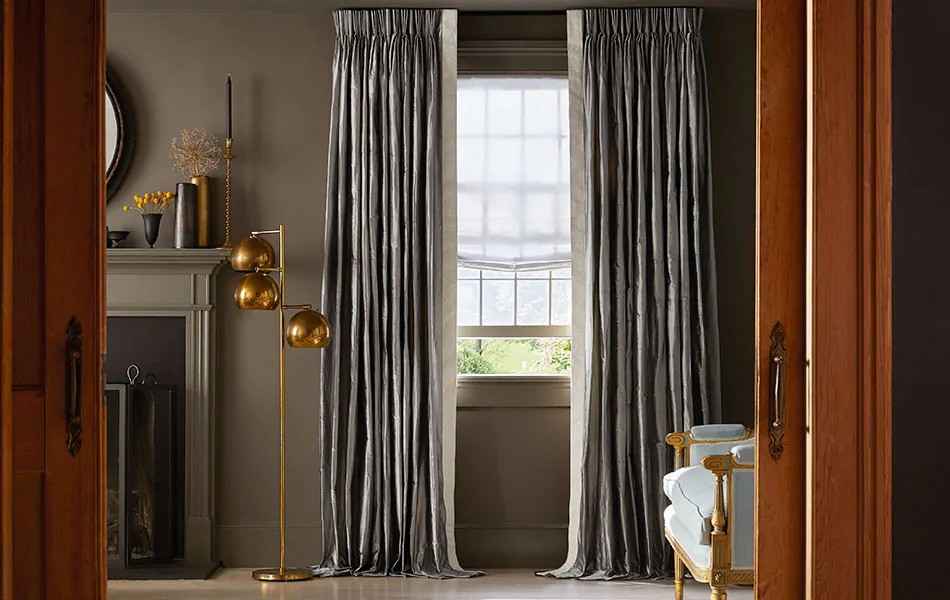
Just as the name suggests, puddle-length drapery features excess fabric that puddles on the floor. The result is an opulent, luxurious look ideal for formal dining and living rooms.
How to Measure for Puddle-Length Drapery: Measure from the curtain rod down the floor and add 3 to 6 inches.
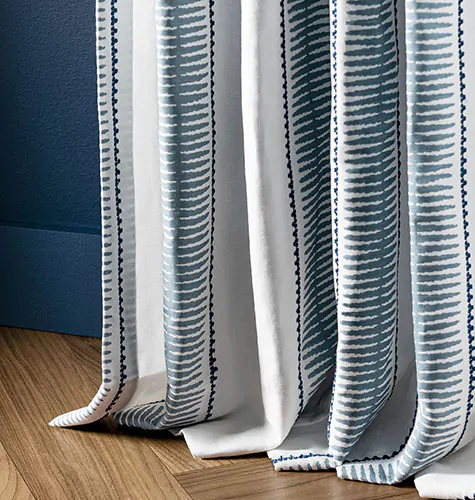
When to Choose Puddle-Length Drapery
Puddling drapery is ideal for:
- An opulent, lavish look.
- Homes with uneven floors as the puddling helps to disguise the unevenness.
- Stationary, decorative applications since the long fabric makes it more difficult to adjust the panels regularly.
- Formal rooms like dining rooms and living rooms.
- Thick, luxurious fabrics, like silk, wool, heavy linens like Luxe Linen, and velvet which help to make the puddling lusher and fuller.
When Not to Choose Puddle-Length Drapery
Puddle length drapery is not as versatile as the shorter lengths and may not be appropriate for the following applications:
- Kids’ rooms and homes with pets, as the excess fabric can be easily sat upon, trampled and torn.
- Active rooms like kitchens, game rooms and sunrooms.
- Functional spaces where you’ll need to adjust the drapery frequently for privacy and light control like bedrooms, media rooms and casual living rooms.
Factors to Consider When Choosing Length
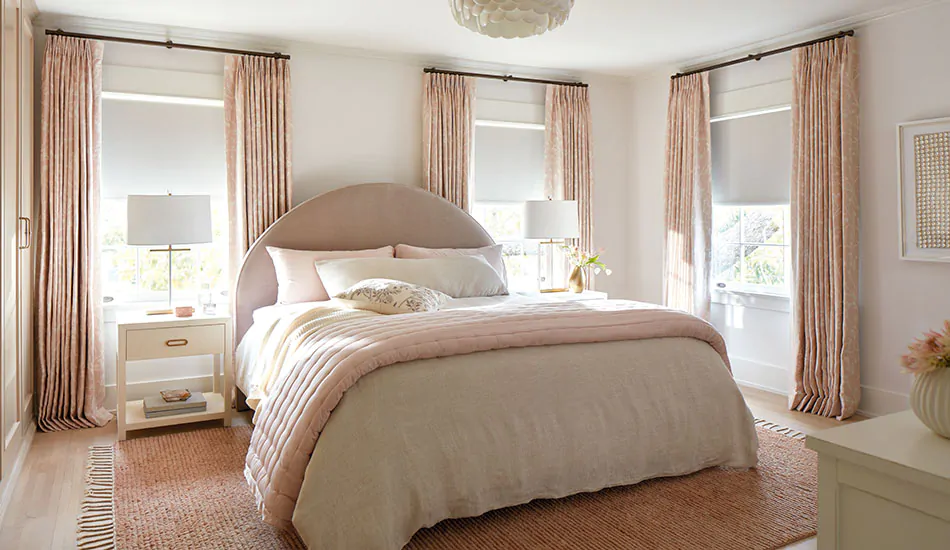
When deciding if curtains should touch the floor, break or puddle, there are several factors to consider.
- Type of room & activity levels – The type of room you’re installing your curtains in and how busy or active the room is both play big roles in which type of length is best. In general, more casual, active rooms like kitchens and bedrooms benefit from a shorter length (float or break) while formal, less active rooms like dining rooms can be elevated further with luxurious puddle drapery.
- Light control & insulation – For the best light control and insulation, choose break or puddle-length drapery which will help to block both cold air and light from seeping through at floor level.
- Everyday functionality – If you know you’ll be opening and closing your curtains on a regular basis, it’s best to choose float or break length, as puddling drapery will drag on the floor excessively.
- Fabric selection – Synthetic fabrics that are unlikely to shrink or stretch are best for float-length drapery; natural fibers that are prone to stretching and shrinking are best for break-length drapery; and luxurious thick fabrics, like velvet, silk and wool, are ideal for puddle-length drapery.
How to Measure for Curtain Length
Now that you know about each type of length and factors for choosing each one, it’s time to learn the best practices for measuring curtain length so you can get just the right look and functionality.
Before measuring for length, you need to decide how to position your curtain rod or track system. The best way to hang drapey is high and wide above your window, which helps to accentuate the height of your room and the size of your window. The curtain rod should sit a little more than halfway between your window frame and ceiling. Or, for very tall ceilings, position your rod about 8 to 10 inches above the window frame.
Once you have the right positioning for your curtain rod, you can measure for length.
Get Personalized Design Advice for Curtain Length
With a thorough understanding of drapery length and how to choose the right one for your curtains, you’re ready to start turning your project vision into reality. Start by connecting with an expert Design Consultant who can answer your questions and help guide you toward the right drapery style, fabric and length. You can schedule a consultation in-showroom where you can explore all your drapery options in person or schedule a virtual consultation for convenience and ease. Either way, you’ll get the support you need to make the final selections that transform your interior.
